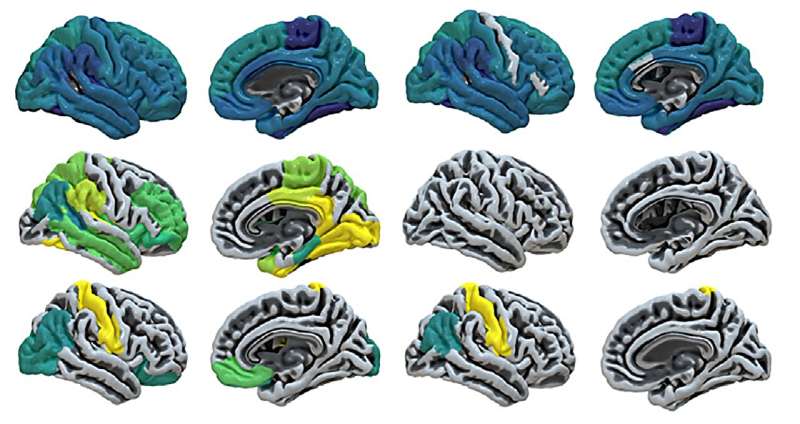This article has been reviewed according to Science X's editorial process and policies. Editors have highlighted the following attributes while ensuring the content's credibility:
fact-checked
peer-reviewed publication
proofread
Researchers pinpoint origin of characteristic brain waves in disorders of consciousness

Researchers of the Human Brain Project at the University of Liège have coupled the measurements of brain waves associated with disorders of consciousness (DoC) with glucose usage in specific brain areas, identifying where in the brain the waves might be generated.
The study for the first time adds the dimension of location and energy consumption to the reading of brain waves in DoC, and reveals the important role of subcortical areas in driving cortical activity associated with consciousness. The findings have been published in the journal Cell Reports.
The brain activity in healthy individuals and in patients with a DoC (such as coma and unresponsive wakefulness syndrome) can be studied by looking at the type of brain waves generated using electroencephalography (EEG).
"At one end of the spectrum we have slow, wide-ranging waves of activity, called delta waves, mostly associated with unconsciousness, spreading across the brain in an undifferentiated manner. At the other end, there are the alpha waves, which are higher frequency and more localized, which we associate with consciousness and cognition, but can also be related to suppression of irrelevant information. The intermediate theta waves could be associated to activity generated by consciousness supporting networks or to neurons functioning in isolation," explains Dutch researcher Jikta Annen, member of the Coma Science Group at the University of Liège, Belgium.
"However, these can only tell us half the story: some unconscious patients, for example, still experience localized alpha waves. We need to look into where in the brain these waves are generated in order to better understand the root cause of the dysfunction in a specific patient."
The researchers used glucose uptake to identify the areas where the brain waves are generated: the more active a specific part of the brain is, the more glucose it consumes. "We use a glucose positron emission tomography (PET) scan to analyze the concentration of glucose in the brain, correlating it with the type of brain waves detected by the EEG," Prof. Steven Laureys explains.
"We found out that the energy consumption in the subcortical area is related to the production of the faster alpha waves. The distribution of theta power in the central areas of the brain is tied to its functioning for reaching consciousness."
The researchers also discovered that while glucose consumption in healthy patients is overall higher during intermediate waves and lower during alpha waves, the reverse is true for patients with DoC.
"Alpha waves are tied to more energy usage in these patients, a sign of suboptimal working point in patients with a DoC, suggesting that there is an inverted u-shape relation between alpha power and brain function, balancing suppression and promotion of neural activity." According to the researchers, better understanding of the electro-metabolism of the brain could help in identifying where the brain circuitry malfunctions, leading to better diagnosis and treatment.
More information: Jitka Annen et al, Cerebral electrometabolic coupling in disordered and normal states of consciousness, Cell Reports (2023). DOI: 10.1016/j.celrep.2023.112854



















